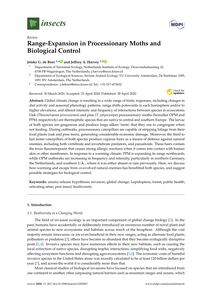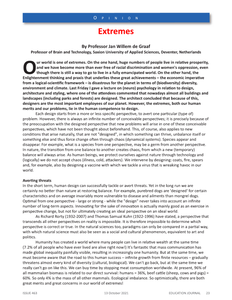The relationship between race and biology is complex. In contemporary medical science, race is a social construct that is measured via self-identification of study participants. But even though race has no biological essence, it is often used as variable in medical guidelines (e.g., treatment recommendations specific for Black people with hypertension). Such recommendations are based on clinical trials in which there was a significant correlation between self-identified race and actual, but often unmeasured, health-related factors such as (pharmaco) genetics, diet, sun exposure, etc. Many teachers are insufficiently aware of this complexity. In their classes, they (unintentionally) portray self-reported race as having a biological essence. This may cause students to see people of shared race as biologically or genetically homogeneous, and believe that race-based recommendations are true for all individuals (rather than reflecting the average of a heterogeneous group). This medicalizes race and reinforces already existing healthcare disparities. Moreover, students may fail to learn that the relation between race and health is easily biased by factors such as socioeconomic status, racism, ancestry, and environment and that this limits the generalizability of race-based recommendations. We observed that the clinical case vignettes that we use in our teaching contain many stereotypes and biases, and do not generally reflect the diversity of actual patients. This guide, written by clinical pharmacology and therapeutics teachers, aims to help our colleagues and teachers in other health professions to reflect on and improve our teaching on race-based medical guidelines and to make our clinical case vignettes more inclusive and diverse.
MULTIFILE

Global climate change is resulting in a wide range of biotic responses, including changes in diel activity and seasonal phenology patterns, range shifts polewards in each hemisphere and/or to higher elevations, and altered intensity and frequency of interactions between species in ecosystems.Oak (Thaumetopoea processionea) and pine (T. pityocampa) processionary moths (hereafter OPM and PPM, respectively) are thermophilic species that are native to central and southern Europe. The larvae of both species are gregarious and produce large silken ‘nests’ that they use to congregate when not feeding. During outbreaks, processionary caterpillars are capable of stripping foliage from theirfood plants (oak and pine trees), generating considerable economic damage. Moreover, the third to last instar caterpillars of both species produce copious hairs as a means of defence against naturalenemies, including both vertebrate and invertebrate predators, and parasitoids. These hairs contain the toxin thaumetopoein that causes strong allergic reactions when it comes into contact with humanskin or other membranes. In response to a warming climate, PPM is expanding its range northwards, while OPM outbreaks are increasing in frequency and intensity, particularly in northern Germany,the Netherlands, and southern U.K., where it was either absent or rare previously. Here, we discuss how warming and escape from co-evolved natural enemies has benefitted both species, and suggest possible strategies for biological control.
DOCUMENT

It is believed that recognising and celebrating diversity in our foodscapes is the right thing to do. But why, really? What benefits make it paramount for this diversity to be lauded? This question needs answering to add more legitimacy to promoting urban food diversity. In this essay we try to do so by investigating the link between ‘recognition justice’ – the celebration of diversity –and inclusion, and understanding inclusion as vital for (social) sustainability. We use two research projects to demonstrate empirically-based lessons which can be drawn to support the need to recognise and celebrate diversity in our urban foodscape.
DOCUMENT

Abstract Aims: Medical case vignettes play a crucial role in medical education, yet they often fail to authentically represent diverse patients. Moreover, these vignettes tend to oversimplify the complex relationship between patient characteristics and medical conditions, leading to biased and potentially harmful perspectives among students. Displaying aspects of patient diversity, such as ethnicity, in written cases proves challenging. Additionally, creating these cases places a significant burden on teachers in terms of labour and time. Our objective is to explore the potential of artificial intelligence (AI)-assisted computer-generated clinical cases to expedite case creation and enhance diversity, along with AI-generated patient photographs for more lifelike portrayal. Methods: In this study, we employed ChatGPT (OpenAI, GPT 3.5) to develop diverse and inclusive medical case vignettes. We evaluated various approaches and identified a set of eight consecutive prompts that can be readily customized to accommodate local contexts and specific assignments. To enhance visual representation, we utilized Adobe Firefly beta for image generation. Results: Using the described prompts, we consistently generated cases for various assignments, producing sets of 30 cases at a time. We ensured the inclusion of mandatory checks and formatting, completing the process within approximately 60 min per set. Conclusions: Our approach significantly accelerated case creation and improved diversity, although prioritizing maximum diversity compromised representativeness to some extent. While the optimized prompts are easily reusable, the process itself demands computer skills not all educators possess. To address this, we aim to share all created patients as open educational resources, empowering educators to create cases independently.
DOCUMENT

This article focuses on engagements with elephants in diverse contexts, inquiring why some scholars are indifferent or even actively opposed to discourses that emphasise elephant suffering. In order to address this question, this article will explore three interrelated streams within social science: one that criticises conservation as an elitist, neo-colonial enterprise; one that is preoccupied with the social construction and cultural interpretation of natural phenomenon; and a third sometimes referred to as the new conservation science that focuses on economic valuations of the benefits nature, viewing “nature is a warehouse for human use.” https://doi.org/10.1080/13880292.2016.1204882 LinkedIn: https://www.linkedin.com/in/helenkopnina/
MULTIFILE

Ghanaian farmers suffer from a decline in cocoa production partly due to damages and diseases from insect pests. To increase predation by bats on insects on the cocoa plantations we installed two different types of bat boxes on 15 plantations around the village of Buoyem. Bat activity, bat species composition (numbers of insectivorous and frugivorous bats) and insect abundance were measured before and after bat box installation. Insectivorous bats were present on all ofthe sampled plantations, namelyleaf-nosed bats (Hipposideros sp.), slit-faced bats (Nycteridae sp.), horseshoe bats (Rhinolophus sp.) and vesper bats (Vespertilionidae sp.). Furthermore, no correlation between insect abundance and bat activity could be detected. The bat boxes were not occupied yet during the research period since rainy season started in the second half of the measurements and bat activity decreases with increasing precipitation which is supported by our Un dings. Additionally, the available time period between in stallation and measuring of the effects of the boxes was very short when compared to similar researches. Bats alsohave different preferences per species for size and shape of bat boxes and the number of naturally available roosting sites also influences bat box occupancy. Our results suggest that bats are abundant above cocoa plantations in Buoyem and therefore bat boxes have the potential to be ahelpful tool in insect pest control.
DOCUMENT

There is more to be learned from nature as a whole. In practice ‘nature’ is often used in teaching, training, consultancy and organisational development as a metaphor, as a source of inspiration or as an example for all kinds of processes, including leadership, cooperation, relationships and the development of organisations and society. Mainly ecological, and much less frequently biological, processes are generally involved here. The question has gradually arisen whether we can learn more from nature in the social environment than what we ‘see’ on the surface - which is often translated in metaphors. Seen more holistically, this is about the systemic side, the complexity, the context and the coherence. For example, can we demonstrate that applying fundamental ecological principles, such as cycles (learning, self-organising, selfregulating and self-sufficient capacity), succession, diversity and resilience, social and cooperative behaviour, interconnectedness and interdependency within an organisation leads to a sustainable organisation? Mauro Gallo is conducting research into the significance of technical innovation in and for the agricultural and food sector, and into the question whether biomimicry can in fact be backed up in such a way that it contributes to the social sciences domain. At the same time there is a clear teaching issue: Is it logical from the perspective of our green DNA to include biomimicry thinking in our teaching? Is it possible to learn to apply biomimicry, and can biomimicry be applied in teaching/learning? (How) can we apply biomimicry in green VMBO and MBO, pass it on to the teachers of the future in teacher training courses and include it in making current lecturers more professional? Is it conceivable that it could become an integral component of the curricula in green HBO?
DOCUMENT

There is more to be learned from nature as a whole. In practice ‘nature’ is often used in teaching, training, consultancy and organisational development as a metaphor, as a source of inspiration or as an example for all kinds of processes, including leadership, cooperation, relationships and the development of organisations and society. Mainly ecological, and much less frequently biological, processes are generally involved here. The question has gradually arisen whether we can learn more from nature in the social environment than what we ‘see’ on the surface - which is often translated in metaphors. Seen more holistically, this is about the systemic side, the complexity, the context and the coherence. For example, can we demonstrate that applying fundamental ecological principles, such as cycles (learning, self-organising, selfregulating and self-sufficient capacity), succession, diversity and resilience, social and cooperative behaviour, interconnectedness and interdependency within an organisation leads to a sustainable organisation? Mauro Gallo is conducting research into the significance of technical innovation in and for the agricultural and food sector, and into the question whether biomimicry can in fact be backed up in such a way that it contributes to the social sciences domain. At the same time there is a clear teaching issue: Is it logical from the perspective of our green DNA to include biomimicry thinking in our teaching? Is it possible to learn to apply biomimicry, and can biomimicry be applied in teaching/learning? (How) can we apply biomimicry in green VMBO and MBO, pass it on to the teachers of the future in teacher training courses and include it in making current lecturers more professional? Is it conceivable that it could become an integral component of the curricula in green HBO?
DOCUMENT

There is mounting evidence that efforts to mitigate the adverse effects of human activity on climate and biodiversity have so far been unsuccessful. Explanations for this failure point to a number of factors discussed in this article. While acknowledging cognitive dissonance as a significant contributing factor to continuing unsustainable practices, this article seeks to explore hegemonic rationality of industrial expansion and economic growth and resulting politics of denial. These politics promote the economic rationale for exploitation of the environment, with pursuit of material wealth seen as the most rational goal. Framed this way, this rationality is presented by political and corporate decision-makers as common sense and continuous environmentally destructive behavior is justified under the guise of consumer choices, hampering meaningful action for sustainable change. This article underlines forms of alternative rationality, namely, non-utilitarian and non-hierarchical worldview of environmental and human flourishing, that can advance sustainability. LinkedIn: https://www.linkedin.com/in/helenkopnina/
DOCUMENT

Ecocentrism has roots in environmental philosophy, which questions the conceptual dichotomy between humans and the environment, acknowledging nonhuman species' right to flourish independently of human interest (Naess 1973). Generally, ecocentrism refers to a planet- and nature-centered as opposed to the human-centered (anthropocentric) system of values. Inspired by this philosophy, ecocentric education focuses on intrinsic values of the ecosystem, environment, and individual living beings and habitats in environmental education (EE) and education for sustainable development (ESD). https://rd.springer.com/referencework/10.1007/978-3-319-63951-2 LinkedIn: https://www.linkedin.com/in/helenkopnina/
MULTIFILE

Humanity has created a world where many people can live in relative wealth at the same time (7.2% of all people who have ever lived are alive right now!) It 's fantastic that mass communication has made global inequality painfully visible, resulting in increasingly one humanity. But at the same time, we must become aware that the road to this human success – infinite growth from finite resources – gradually threatens almost every kind of diversity (cultural, biological). We can 't go back, but at the same time we really can 't go on like this.
MULTIFILE
